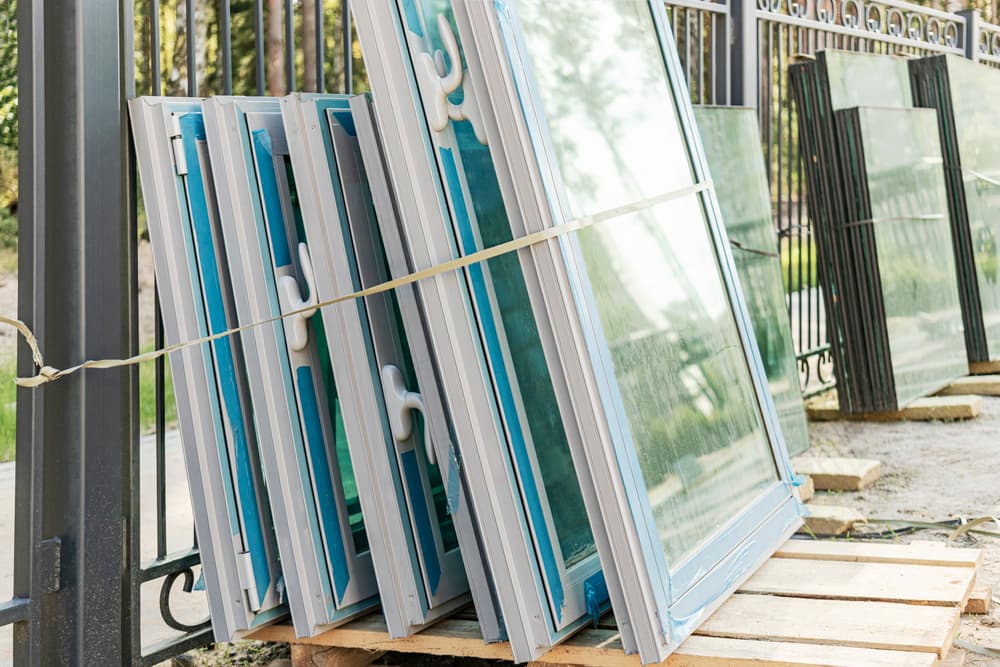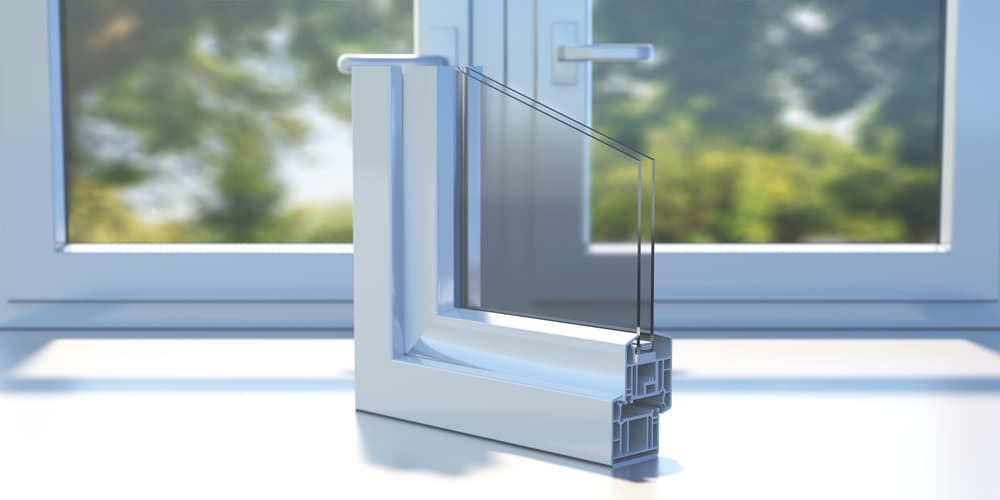How to choose the best thermal insulation for windows: a comprehensive guide
Improve the energy efficiency of your traditional timber windows and reduce drafts with proper thermal insulation and glazing upgrade.
In this post we will explore window heat loss in UK homes, you’ll realise how vital proper insulation is for warmth and reduced energy bills, along with the importance of seasonal maintenance for sash windows to ensure optimal performance.
Understanding window heat loss in as a part of the whole house heat loss
Windows are often overlooked contributors to energy inefficiency, responsible for 20% of household heat loss, especially in period properties with single-glazed wooden windows.
This leakage can significantly impact energy costs if proper thermal insulation isn’t implemented.
| Component | Heat Loss (%) |
| Windows | 20% (30% single glazed windows) |
| Walls | 35% |
| Roof | 25% |
| Floors | 15% |
| Doors | 5% |
Upgrading your thermal windows insulation is crucial for enhancing comfort and lowering your carbon footprint.
By investing in top-notch solutions, like vacuum double glazing, you’re not only ensuring a snug home but also committing to environmental sustainability.
Now that we understand the impact of window heat loss let’s explore the top thermal insulation options available to combat this issue effectively.

Top Thermal insulation options for windows
When boosting energy efficiency and combating heat loss, you’ll find several window insulation methods worth considering. Here’s a distinctly British approach to the leading options:
- Double Glazing: Incorporates two layers of glass to enhance thermal insulation. This setup minimises window heat loss by around 50%.
- Triple Glazing / Vacuum insulated glazing: Provides superior energy savings through three layers, perfect for exceptionally cold climates with high windows thermal insulation needs.
- Secondary Glazing: Introduces a custom pane within existing windows, excellent for listed buildings retaining original architecture.
- Thermal Curtains: Serves dual purposes by insulating and ensuring a seasonally adaptable atmosphere indoors.
- Window Film: Cost-efficient barriers in scenarios where replacements prove tricky.
With these choices, you’re equipped to ensure thermal windows insulation. Dive deeper with us to explore double and triple glazing, identifying which best suits your needs.
Double vs Triple Glazing: which is right for your home?
When deciding whether double or triple glazing complements your home’s charm, consider each option’s thermal insulation benefits.
Double glazing, with two glass layers, significantly increases energy efficiency and retains more heat. In contrast, triple glazing, ideal for colder climates, adds an extra panel, further enhancing window insulation.
“Investing in window insulation enhances comfort, cuts heat loss, and boosts long-term value, transforming energy management.”
Consider your property’s orientation, financial aims, and warmth requirements for efficient protection. Despite the excellent insulation offered by double and triple glazing, secondary glazing is another affordable option worth exploring. Let’s focus on this next.

Secondary glazing: a cost-effective alternative
Secondary glazing is a smart choice for windows insulation while preserving heritage aesthetics. Ideal for listed buildings and conservation areas where changing original windows is limited, these panels offer thermal and acoustic advantages.
By adding an independent frame to existing sashes, you create a robust barrier against heat loss, significantly reducing drafts and condensation. Installation options range from DIY kits to professional services, suiting your style and requirements. It’s especially effective for traditional timber sash windows, offering improved efficiency without compromising historical character.
Secondary glazing strikes a balance between energy savings and architectural conservation. It is cost-effective yet impactful. Let’s now delve into DIY techniques to improve your window insulation economically.
DIY window insulation techniques
Boosting the warmth of your home doesn’t have to demand hefty expenses or daunting upgrades. Embrace these budget-friendly DIY windows insulation techniques to maintain comfort while managing heat costs:
- Draught Excluders: These efficient devices prevent unwanted draughts through window gaps. They are available in styles to complement any decor.
- Thermal Curtains: These curtains enhance insulation by preserving room temperature during harsh weather and provide additional soundproofing.
- Thermal Window Film: Apply this insulating window film easily to create an effective barrier. It’s ideal when replacing windows isn’t feasible and attaches effortlessly with gentle heat.
Utilising these methods not only curtails draughts but also achieves notable savings on your yearly energy bills—a win for both comfort and finance.
Armed with knowledge about various thermal insulation methods, let’s discuss selecting the ideal solution for your specific needs and property type.
Choosing the right thermal insulation for your windows
Choosing the right insulating window solution requires a balance of your property’s needs, budget, and energy-saving goals. Secondary glazing is ideal for preserving aesthetics, while insulating window film is a cost-effective option minimising thermal loss. As one expert notes:
“Personalised insulation strategies not only enhance window efficiency but also boost your comfort.”
Evaluate these options to maximize thermal efficiency cost-effectively. As we wrap up our comprehensive guide, let’s address some frequently asked questions to ensure informed decisions about your window insulation.
Frequently Asked Questions About Window Thermal Insulation
What is the most cost-effective way to insulate windows in the UK?
Enhancing your window insulation is cost-effective with insulating window film. This practical solution is straightforward to install and effectively minimises drafts, ensuring immediate savings on energy bills. Discover innovative methods to increase comfort and energy efficiency next.
How much can I save on energy bills by insulating my windows?
Embarking on a window insulation project in your UK home can cut energy bills by 10-25%. With effective materials like insulating window film or thermal window film, energy efficiency soars. Invest in improvements to smartly ensure thermal windows safeguard your savings.
Are there any grants available for window insulation in the UK?
Across the UK, government grants are available for window insulation, offering financial support and easing investment in energy efficiency projects. Refer to local councils or the official energy efficiency website for specific guidance.
Smart investment lies in a wealth of resources.
Can I install thermal insulation on listed buildings or in conservation areas?
If you’re in a *listed building* or conservation area, window insulation requires careful planning to protect its heritage. Seek approval from local authorities and use reversible methods like secondary glazing to preserve character while enhancing energy efficiency. Let’s explore options like insulating window film.
How long does window insulation typically last?
The lifespan of window insulation varies, primarily affected by material quality. Generally, thermal window film lasts five to ten years before needing replacement. Opting for high-quality products and expert installation can ensure thermal windows enhance heat retention effectively, promoting energy efficiency throughout.
What’s the difference between U-value and R-value in window insulation?
Navigating energy efficiency might seem complicated, but understanding U-value and R-value is helpful. The U-value tracks heat escape; lower numbers suggest better systems. Meanwhile, a high R-value signifies greater resistance to heat loss. Equipped with these terms, you’re ready to explore secondary glazing for your windows.
![[AD] We went to the newly opened Cha Sha Kingston a couple of weeks ago, and wow — taste bud adventure unlocked! The boys devoured the masala fries and chicken tikka rolls, while we couldn’t get enough of that epic kebab butter curry 😍🍛.
It’s amazing value for food this tasty (and everyone left happy and VERY full!).
Delicious food, vibrant vibes and incredible value — the perfect combo for your next meal.
📍Cha Sha Kingston
43 Surbiton Road, KT1 2HG
🌐 chasha.co.uk
Other Cha Sha locations in Birmingham, Ilford, Southampton and Wembkey
#ChaSha #ChaShaKingston #KingstonEats #FoodieFinds #UKFoodie #FoodReview #KingstonUponThames #FamilyEats #FamilyDining #FoodieKids](https://suburban-mum.com/wp-content/uploads/2016/02/574770541_18560351146016840_6855048070839528040_n-180x320.jpg)

![[AD] We’re a cricket-mad family, so we’re buzzing that @thehundred is back this August! 🏏🔥
To get ready, M tried out the official FREE Activity Pack — and it’s brilliant! 🙌
Packed with fun games, creative challenges and sporty tasks, it’s perfect for getting kids hyped whether you’re at home or on the go.
👉Download yours now (link in bio)
@londonspirit @ovalinvincibles #EveryMomentCounts #TheHundred
#EnglandCricket #CricketFamily #TheHundredCricket #LondonBloggers #Cricket #CricketIsLife #kidsfun](https://suburban-mum.com/wp-content/uploads/2022/11/505472555_18531279601016840_7092520074819907569_n-180x320.jpg)



![[AD - Press visit]
We enjoyed the glorious sunshine this weekend with a trip to Brighton. We went on the @brightoni360official which is right by the sea front.
The i360 pod take a slow journey up, allowing you to take in views across Brighton and the South Downs 450ft above ground. There’s a bar inside with drinks and snacks available to purchase and the experience lasts 25 minutes.
Afterwards, we headed to the open air roller rink for a roller skating session!
The roller rink is:
⭐ Suitable for over 5s
⭐ £6.50 if you have your own skates or £9.50 if you need to hire them
⭐ 45 minutes per session
Full details to visit the i360 + skating
📍 Brighton i360, Lower Kings Road, Brighton BN1 2LN
🚗 Parking nearby (we parked in the Regency Square Car park)
🎟️ Prices start from £25.40 for an adult and £16.90 for a child
🕐 Opening hours are currently Sun-Fri 10.30am-18.30pm and until 19.30pm on Saturdays
☕️ Bar inside the i360, cafe and gift shop
Book tickets here:
https://tickets.brightoni360.co.uk/tickets/?_ga=2.195305772.1869001490.1689671753-1757164059.1689671753/#events?eventid=157](https://suburban-mum.com/wp-content/uploads/2015/04/417980235_313576471048632_3682382982231216432_n.jpg)

![[AD] ***Summer of fun at Barracudas Activity Camps!****
There is plenty for kids to do at @barracudas_activity_day_camps
From Tennis, Archery, Swimming, Motor Sports and more you can be sure that there will be something for kids aged 4.5-14. ⚽🏈🥅🎾🏓🏎️🏹🏊♂️🏉
You can book on a day by day basis - so it can fit in with any other days out/activities you have planned and there are early drop off and late pickup options available. Barracudas are also Ofsted registered so you can use your Childcare Vouchers too.
⭐⭐⭐Get £20 off a week or £4 off a day using my discount code: MARIA20⭐⭐⭐
#BarracudasActivityDayCamp #BarracudasActivityCamp #BarracudaAmbassadors #SummerHolidays #SchoolHolidays #Summer2023 #SummerCamp #DayCare #Camp #KidsCamp #surreymummy #surreymums #SummerOfFun #ActivityCamps #HolidayCamps #Childcare #SchoolHolidays #schoolholidaycamps](https://suburban-mum.com/wp-content/uploads/2024/07/353583570_625625966167953_545896259645102575_n.jpg)



![[AD] We have some super exciting news...we have been chosen to be Laser Quest Ambassadors, and the boys are over the moon!
We are really lucky that our local Laser Quest (@laserquestkingston) is just around the corner from us. It means we can pop in of a weekend or anytime during the school holidays, and with summer just around the corner, I know Laser Quest will be one of our go-to places for some family fun.
As well as games of Laser Quest, there are also VR experiences and arcade amusements too. To find out a bit more about how Laser Quest works, you can read my blog post: https://www.suburban-mum.com/laser-quest-kingston/ (clickable link in bio)
Don't forget to keep an eye out for our Laser Quest posts - I'm going to be giving away two family passes to use at Laserquest Kingston!
If you can't wait and want to head down to Laser Quest to try it out, use the code SUMMER30 for 30% off your booking. The code is valid from now until the end of August 2023 and can be used on Laser Quest games and birthday party bookings.
#LaserquestAmbassador #Laserquest #LaserquestKingston #ActivitiesForKids #FamilyFun #DaysOutWithKids #Lasertag #LaserquestVR #Kingston #ThingsToDoInKingston #SurreyFamilyDaysOut #ThingsToDoWithKids #RainyDayFun #SurreyMummy #SurreyLife #LifeWithKids #LifeWithBoys #familyfunday](https://suburban-mum.com/wp-content/uploads/2015/04/353230107_797358078406942_2405522556733455165_n.jpg)

![[AD] The sun has finally made an appearance and the boys have been making the most of it by spending it
in the garden.
They’re go-to is always football and they’ve been trying to improve their aim and accuracy with the new Messi Foldable Footlball goal from the #MessiTrainingSystem range.
I love the fact the goal is foldable, making it easy to store away when not in use. It is also lightweight so you can effortlessly pack it up and take it to the park or to a friend’s house.
The Messi Foldable Football Goal retails at £36 and can be purchased from @argos
You can read my full review here: https://www.suburban-mum.com/messi-foldable-football-goal/
#TrainLikeMessi #FoldableFootballGoal #FootballSkills #OutdoorFun #LionelMessi #LeoMessi #FootballAtHome #OutdoorKids #JustGetOutside #OutdoorsAndFree #ScreenFreeKids #WhateverTheWeatherKids @flair_gp](https://suburban-mum.com/wp-content/uploads/2015/04/341194882_615024710178056_41977149395989448_n.jpg)

![[AD] We are absolutely thrilled to announce that we are Barracuda Ambassadors again this year.
With Easter just around the corner, the boys were sent the @barracudas_activity_day_camps new camp kit in preparation for the school holidays.
There’s a wide range of activities for kids aged 4.5 - 14 including Tennis, Archery, Basketball, Arts & Crafts and more.
If you like the sound of Barracudas, find out more over on their website. You can also save £20 a week or £4 a day, using my discount code: MARIA20](https://suburban-mum.com/wp-content/uploads/2024/07/336812306_765234558514317_685553691647241974_n.jpg)


![[AD - Gifted]
Last weekend we were invited to try out @tsarettaspice’s new Bottomless Brunch menu and I can tell you it was thumbs up all round!
There’s a good choice tapas on offer from Punjabi fish fingers, Indo Chinese Chicken to Spiced Lamb Scotch Eggs and Manchurian Cauliflower (which was amazing!)
If you’re local to Twickenham and fancy giving them a try here’s are the details.
Tsaretta Spice Bottomless Brunch
⭐️£37.50 per head for bottomless Prosecco or cocktail of the day
⭐️£55 per head for bottomless Champagne
⭐️ Food included: 4 tapas selections and dessert or 2 tapas selections, a pav or naanwich and dessert
⭐️ Non-alcohol brunch is also available
Tsaretta Spice
55 Church Street
Twickenham
TW1 3NR
You can also read our full review over on the blog (link in bio)](https://suburban-mum.com/wp-content/uploads/2024/07/334565436_5960402314015030_663031098700829518_n.jpg)



